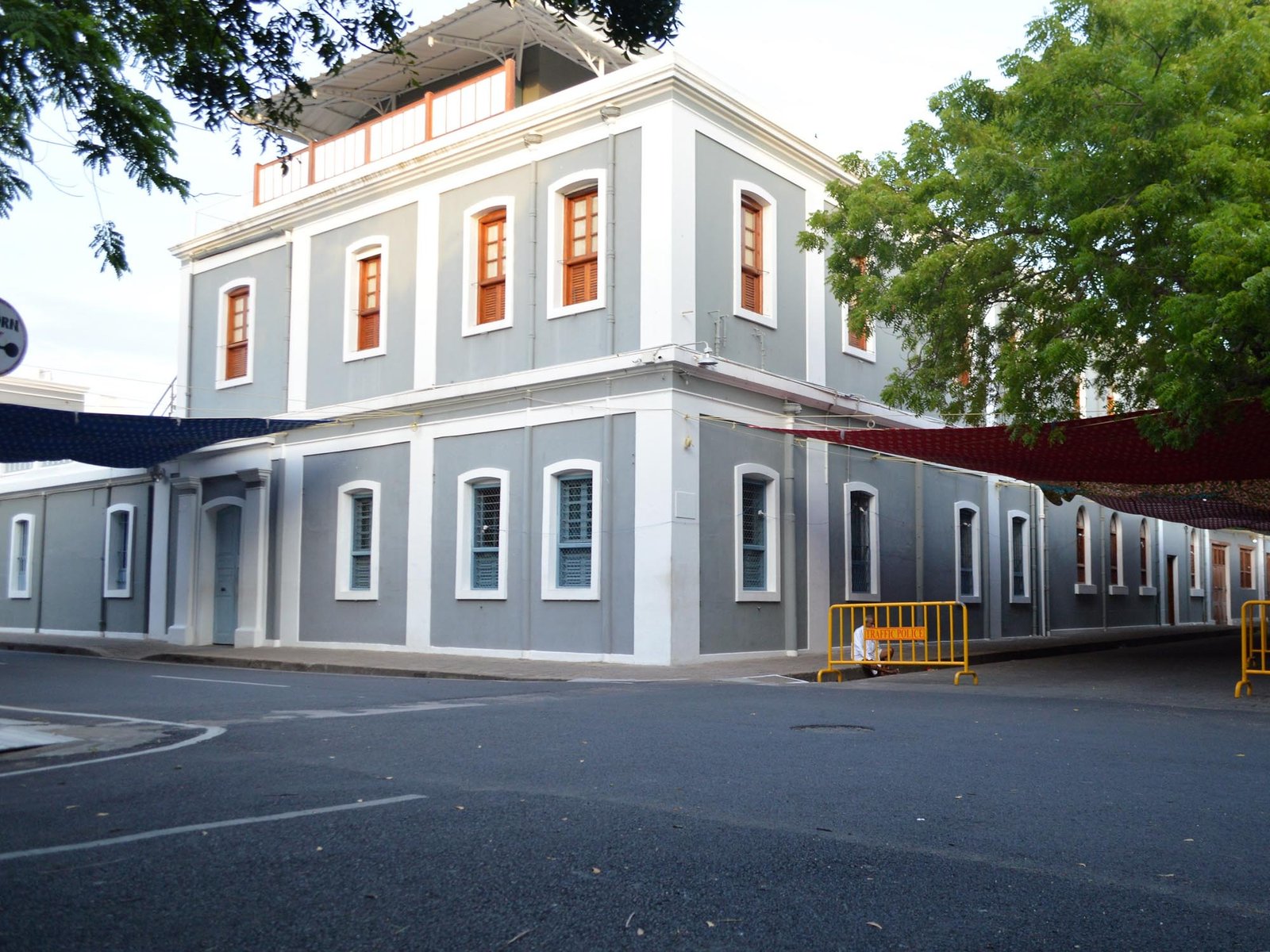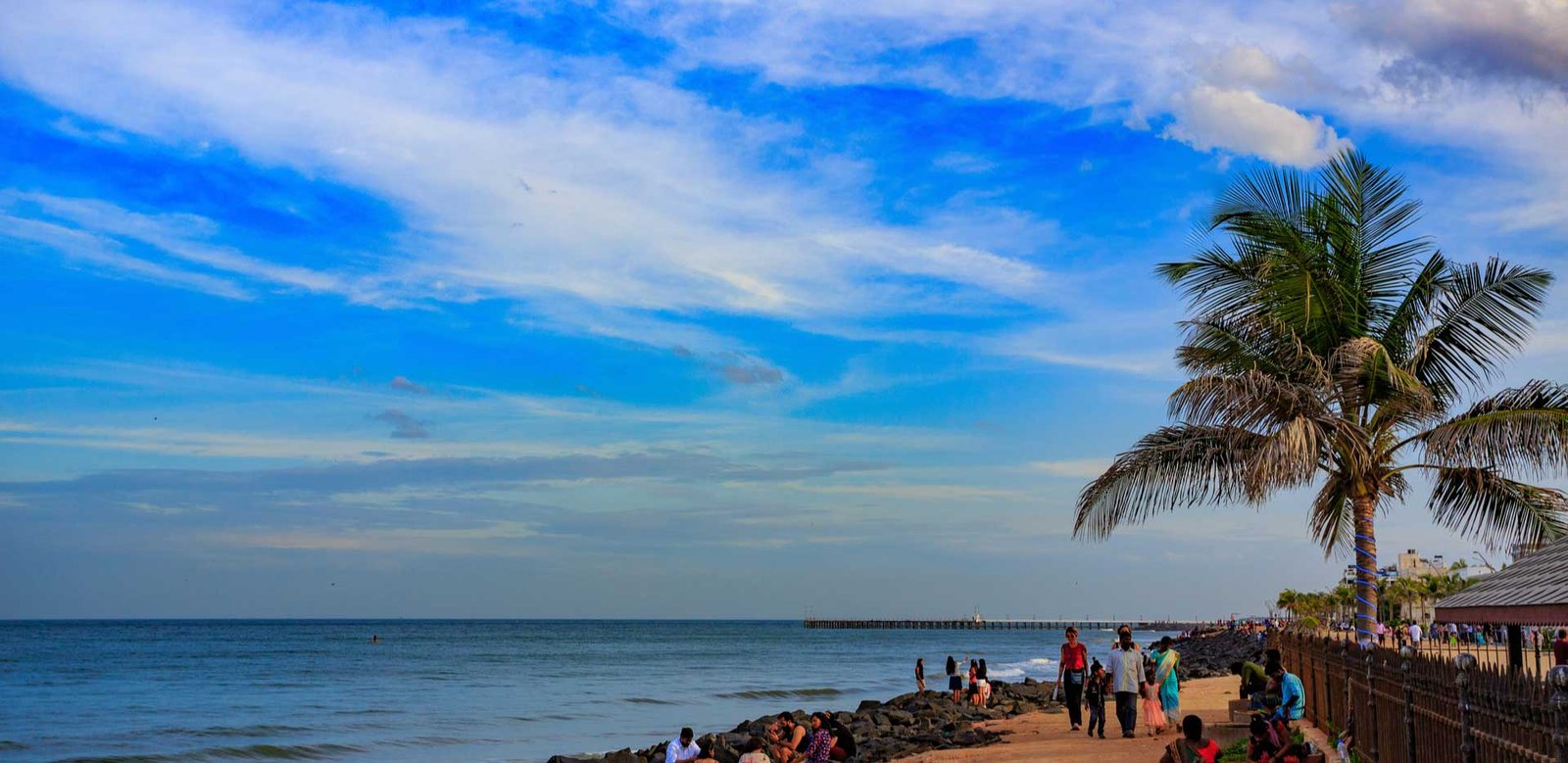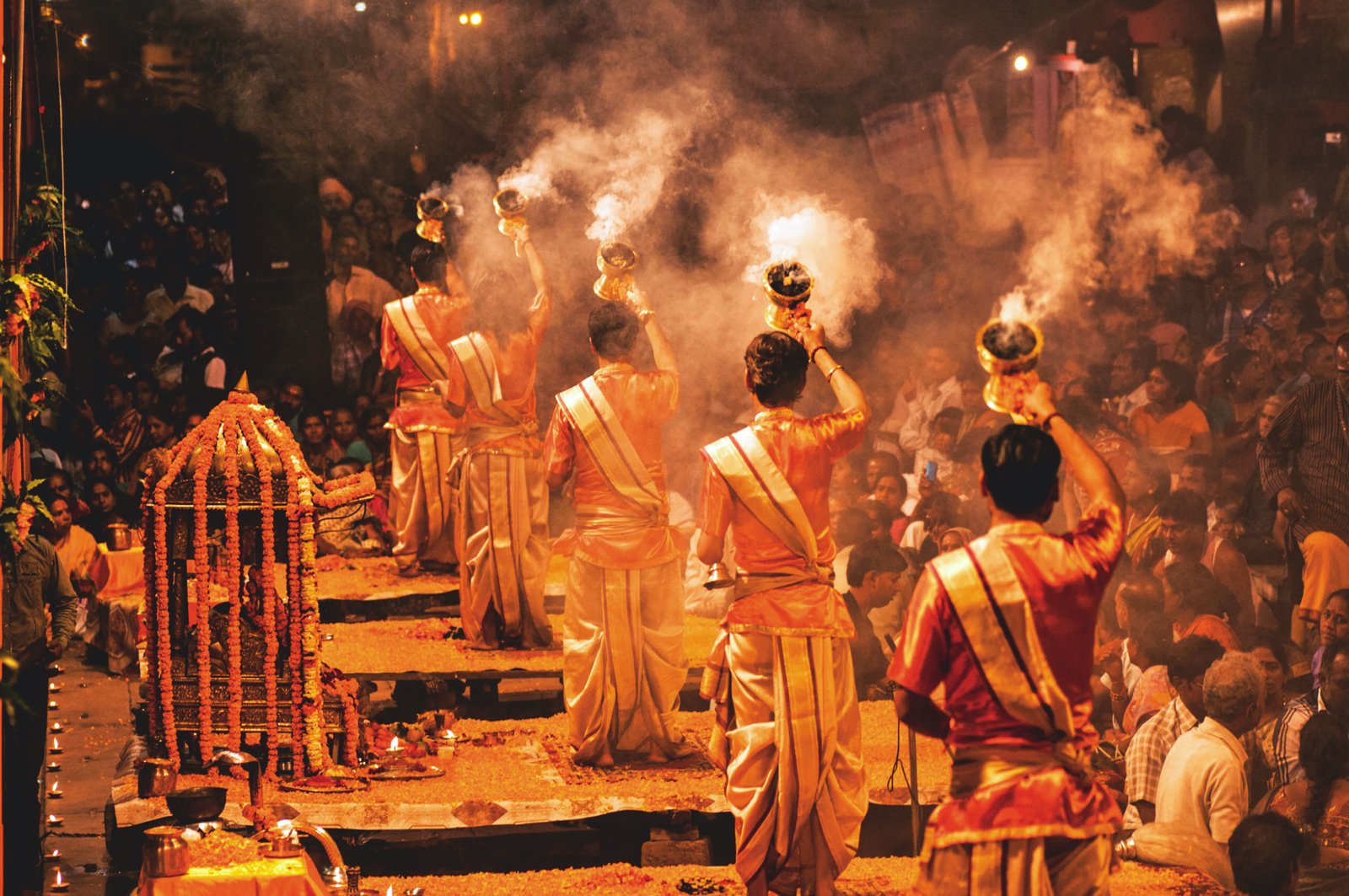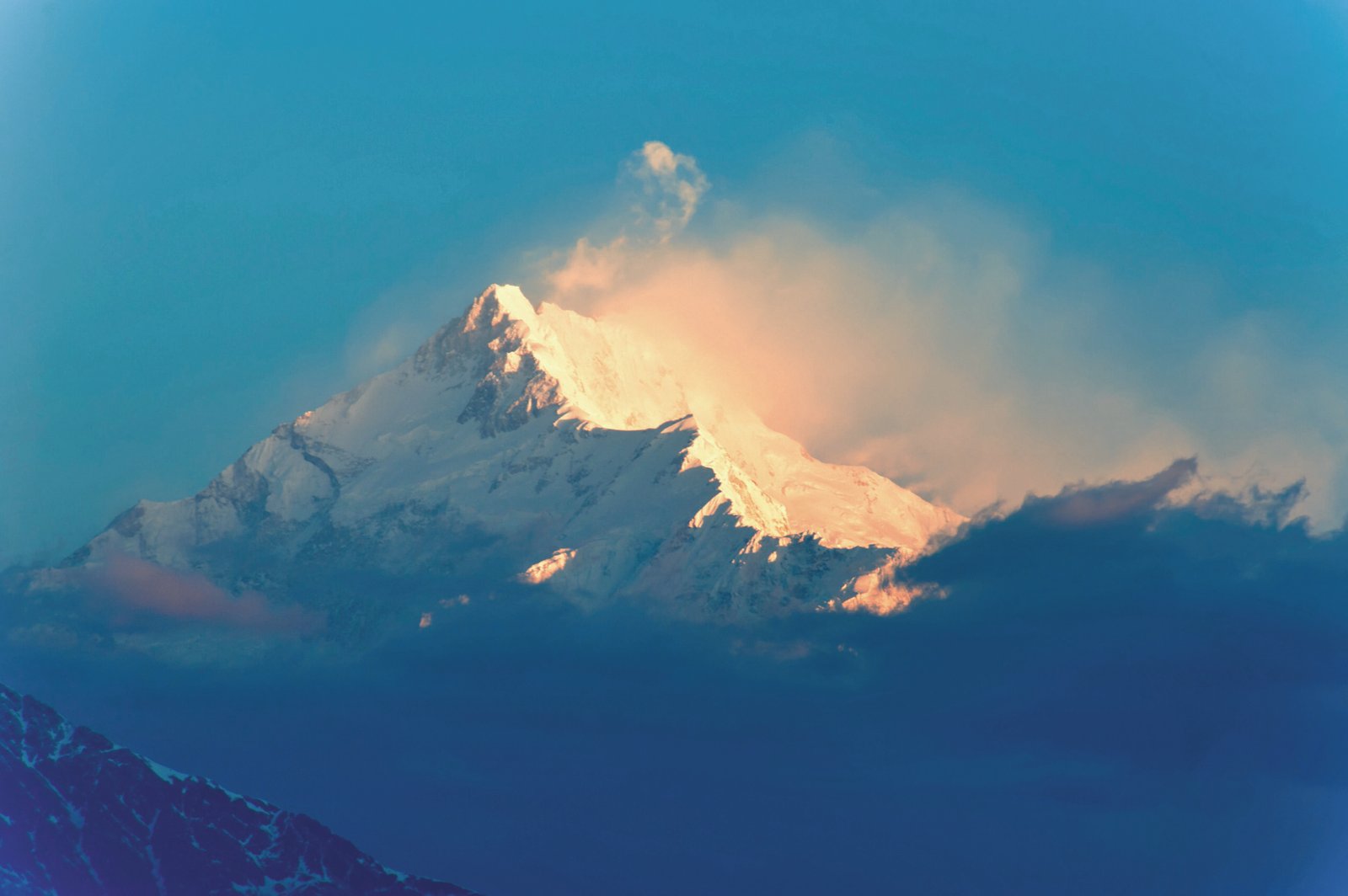Pondicherry or Puducherry:
Pondicherry, other name Puducherry, is a Union Territory on India’s south-eastern coast. It was previously known as a French colony as it was ruled by France until 1954 and is often referred as “Little France”. The Pondicherry city has a distinct blend of French and Tamil culture, as evidenced by its architecture, cuisine, and overall atmosphere. Both French and Indian quarters add to the splendour of the city. Pondicherry, established centuries ago, has seen the rise and fall of South Indian empires and European colonial powers. The city’s well-organized grid design, mustard-coloured colonial homes lining tree-lined boulevards, and prominent buildings such as the French Governor’s residence all point to the city’s strong French influence. Pondicherry’s heart is in the French Quarter, which is a paradise for history enthusiasts and photographers. French street names, bakeries with fresh croissants, and cafes selling strong coffee all contribute to the European feel.
Pondicherry is a place that welcomes both leisure holiday travellers looking for a getaway and devotees on a spiritual journey. Mirra Alfassa (the Mother) developed Auroville, a unique township built on the ideals of human unity, transcending religion, nationality, and caste, offering a spiritual haven for those seeking inner peace. The renowned ashram, established by Sri Aurobindo Ghose and The Mother, is another significant spiritual landmark in Pondicherry. It’s centre for integrated yoga practice, attracting spiritual seekers from all around the world. The architectural charm depicts the colour scheme of structures, which provides a distinct personality. Grey-coloured buildings belong to the Sri Aurobindo Ashram and Yellow and white buildings are typically government properties. Bicycles are a popular mode of transportation in Pondicherry, especially in the French Quarter. It’s a great way to explore the city at a leisurely pace and experience the local atmosphere.
Overall, Pondicherry’s historical significance, stunning French influence, and spiritual ties to Auroville make it a unique holiday destination. Best season to visit Pondicherry is from October to March.
How to reach Pondicherry:
Pondicherry is well connected to the rest of India via a large network of National Highways, a Railway Terminal, and a Domestic Airport.
By Air: The nearest domestic airport to Pondicherry is Puducherry Airport (PUY), located about 5 kilometres from the city centre. However, this airport has limited connectivity.
Currently the Flight Operations has been Suspended till Further Notice.
Nearest International Airport:
- Chennai International Airport – 160 Kms to reach Pondicherry
- Trichy International Airport – 200 Kms to reach Pondicherry
By Rail: Pondicherry is well-connected to major Indian cities by rail. It has daily connectivity to Villupuram, Chennai and Tirupati. While tri-weekly trains connect Pondicherry to Bangalore and Mumbai, other cities like Kolkata, Bhubaneshwar, New Delhi, Mangalore, and Kanyakumari are connected by a weekly train.
By Road: The best connectivity is by road from nearby cities and states. Multiple buses run daily to and from Chennai and Bangalore. Buses also connect Pondicherry to the major cities of Tamilnadu.
Places to visit in Pondicherry:
Pondicherry can be explored by foot or by rickshaw. The tour starts in the French Quarter and ends at a church near the beach. While exploring, we can visit the Aurobindo Ashram, Manakula Vinayagar Temple, Pondicherry Museum, Bharathi Park, Raj Niwas, Gandhi Statue, French War Memorial, Promenade Beach, Our Lady of Angel Church, and the Paper Factory (closed on Sunday).
Matri Mandir Auroville:

The Matrimandir, or “Temple of the Mother,” is a spiritual landmark for integral yoga practitioners in Auroville, a township founded in 1968 to promote human unity. It is regarded as the essence of Auroville and is named after Mirra Alfassa, commonly known as “The Mother,” who worked with Sri Aurobindo to establish Auroville. It is known as the Soul of the City (French: L’âme de la ville) and is located in a huge open area named Peace. Matri Mandir is a symbol of the Divine Mother and a place for solitary meditation and introspection open to people of all religions and beliefs. The Matrimandir is a magnificent golden sphere surrounded by twelve petals, which represent the twelve powers of the Mother, the divine feminine. The inner room contains a massive glass globe that reflects sunlight, creating a mystical atmosphere. Visitors can visit Matri Mandir’s viewpoint from the outside on any day. Individuals who prefer to meditate within the chamber must submit booking requests at least one week in advance to avoid difficulty. Please keep in mind that booking is done individually and based on seat availability, and permission is only granted if there is space available. Arrival and same-day reservations are not allowed. All guests who receive permission should report to the visitor centre at the time specified in your confirmation email. All visitors to the Visitor’s Center should come by 8.15 a.m.
The Inner Chamber remains closed for visitor’s concentration on all Sundays and Tuesdays.
The timing for obtaining authorization:
Morning 10:00 AM to 11:00 AM
Afternoon 02:00 PM to 03:00 PM
Closed on Tuesday
To see the Matrimandir from the outside
Visitors can also see the Matrimandir outer view from the viewpoint. Passes for the Matrimandir Viewing Point can be obtained for free at Auroville’s Visitors Centre, after watching a short introductory video on the Matrimandir. From this viewpoint, you can witness an outside view of Matrimandir, an amphitheatre.
Timings:
Monday to Saturday: 09.00 AM to 05.00 PM
Sunday: 09:00 AM to 04:00 PM only.
Aurobindo Ashram: Sri Aurobindo Ashram was founded in 1926 by Sri Aurobindo, a philosopher, poet, and yogi, and The Mother, a spiritual collaborator. An ashram is a place of peace and tranquility for people to come together to practice yoga and live a life guided by spiritual consciousness. It’s not a place of renunciation, but rather a place to explore your inner self. Visitors can tour the Ashram grounds, meditate in the central courtyard beneath the shade of the massive Service Tree, and learn more about Sri Aurobindo’s teachings. The central focus of the ashram is the Samadhi, a white marble shrine that holds the physical remains of Sri Aurobindo and the Mother. The Samadhi is a place of pilgrimage for followers of Sri Aurobindo’s teachings. The Ashram runs several educational institutions, including schools, colleges, and a university. These institutions provide education based on Sri Aurobindo’s philosophy of integral yoga. The Ashram also runs several businesses and social service organizations. These organizations employ members of the ashram and help to support the ashram’s activities.
Visiting Time: Morning – 08.00 AM to 11.30 AM / Evening – 02.00 PM to 06.00 PM
Holidays: No
Entrance fee: No
Video Cameras and Still Cameras are strictly not allowed.

Manakula Vinayagar Temple: Manakula Vinayagar temple is dedicated to Lord Ganesha in Puducherry. The temple is believed to be over 500 years old, predating the French occupation of the territory. The temple is built in the Dravidian style of architecture and features intricate carvings and sculptures. The most striking feature of the temple is the towering golden vimana (tower) that rises above the sanctum. The main deity of the temple is Lord Ganesha, also known as Manakula Vinayagar. Forty incarnations of Lord Ganesha are carved into the temple’s walls. The speciality of the temple is that we can witness the night ceremony of Lord Ganesha, which is not possible in any other temple as this is the only temple where Lord Ganesha exists with his consorts. (Siddhi and Pudhi).
Darshan Time (General): Morning – 06.30 AM to 11.00 AM / Evening – 04.30 pm to 09.00 PM
Holidays: No
Entrance fee: No
Video Cameras and Still Cameras are strictly not allowed.
Pondicherry Government Museum: The Pondicherry Museum is conveniently located in the White Town area of Pondicherry, close to other popular tourist attractions such as Bharathi Park and the French War Memorial. The Pondicherry Government Museum is an art and history museum located in Pondicherry, India. It’s especially known for its collection of exquisite Chola bronzes. The museum includes a large collection of bronze statues, paintings, sculptures, geological specimens, ancient coins, shells, fossils, and furniture that showcase the cultural heritage of Puducherry and the surrounding region. The museum houses a vast collection of artefacts that narrate the story of Pondicherry’s rich cultural heritage. The museum building itself is a beautiful example of French colonial architecture. The building was constructed in 1788 and was originally a law court. It has a magnificent facade with inscriptions in French, and the two-story building is painted in yellow and peach. The museum is divided into several sections, including the Geological Section, Bronze Gallery, Sculpture Gallery, Painting Gallery, Furniture Gallery, Maritime Gallery, French Gallery, Aurobindo Gallery, and Bibliothèque (Library).
Timings: 09.00 AM to 06.00 PM
Holidays: Monday & Government Holidays
Foreigners (Adults / Kids) – Rs.50 per person
Indians (Adults – Rs. 10 per person / Kids Rs. 5 per person
Video Camera- Not Allowed
Bharati Park: Bharathi Park is a landscaped park featuring a Greco-Roman arch structure, flower beds, well-kept lawns, and exquisite fountains. It is located on Rue Saint Gilles Street in White Town, Pondicherry. The park is divided into four equal parts by walkways and has flowerbeds, well-kept lawns, and exquisite fountains. It’s a great place to relax and enjoy the outdoors. The park offers a serene and peaceful atmosphere, making it a great place to relax and unwind. Visitors can take a stroll amidst the lush greenery, enjoy a picnic on the lawns, or simply sit on a bench and people-watch. The main attraction of the park is the magnificent structure in white known as the Aayi Mandapam. It is a Greco-Roman structure built by Louis Gurre in 1854. The monument was made in honour of the lady courtesan Aayi at the time of the French ruler Napoleon III. The park also has a dedicated play area for children, equipped with swings, slides, and other climbing structures. This is a great spot for families with young kids to burn off some energy.
Timings: 06:00 AM to 07.00 PM
Entrance fee: No
Raj Niwas: Raj Niwas, also known as the Lt. Governor’s Residence, is the official residence of the Lieutenant Governor of Puducherry. Once, it was the official residence of the French governors, but after India’s independence, it became the residence of the lieutenant governor. The building showcases a beautiful blend of Indian and French architecture. There’s a central courtyard on the ground floor, designed in typical Indian fashion with beautifully carved wooden pillars. The first floor features a terrace with decorated masonry columns in European design. A water monument is placed right in the middle of the well-maintained gardens surrounding Raj Niwas. The lawns are further adorned with sculptures. Two imposing canons stand on either side of the main gate, adding a touch of grandeur to the entrance.
Please note that while the Raj Niwas is a working government building and not open to the public for tours, visitors can admire the architecture from outside the gates.
French War Memorial: The French War Memorial is a dignified structure situated on Goubert Avenue in Pondicherry. It serves as a tribute to the valiant Indian soldiers who sacrificed their lives during World War I to fight for the French. Built-in 1938, the memorial is a stark white structure featuring four columns and a life-size statue of a soldier leaning on a rifle. The memorial serves as a permanent reminder of the sacrifices made by Indian soldiers who fought alongside the French during World War I. It honours their bravery and patriotism. Every year on July 14th, which is Bastille Day, a commemoration ceremony is held at the memorial. The monument is beautifully illuminated during this ceremony.
Famous Churches in Pondicherry:
Notre dame des Anges (Our Lady of Angels): Notre Dame des Anges, also known as Our Lady of Angels Church, is a prominent Catholic church located in Puducherry. Church construction began in 1851 under the guidance of French architect Louis Guerre during the reign of Napoleon III and was built in 1855 with Greco-Roman architectural influences. The church is believed to be based on the Notre Dame Cathedral in Paris and the Basilica of Lourdes. It is the fourth-oldest church in Puducherry.
The church features a majestic facade with twin square bell towers and a polygonal dome. The church is known for its beautiful stained-glass windows and pink facade. The church’s exterior is painted a distinctive pink or rose colour, earning it the nickname “The White Chapel” or “Kaps Koil” (The Capuchins’ Church) in Tamil. It is the only church in Puducherry that offers mass in three languages: Tamil, English, and French. This reflects the city’s multicultural heritage. Facing the Bay of Bengal, the church offers serene and scenic vistas, making it a popular spot for both prayer and sightseeing.
Timing: Monday to Sunday: 06.00 AM to 12.00 PM, 04.00 PM to 08.00 PM
The Sacred Heart Basilica: The Sacred Heart Basilica, also known as the Basilica of the Sacred Heart of Jesus, is a Roman Catholic basilica located in Pondicherry. This is situated on the south boulevard, stands out as a boulevard, and stands out as an oriental specimen of gothic splendour. It contains rare and beautiful stained glass panels depicting saints and events from the life of Christ. It was built in 1907 in the Gothic Revival architectural style. It is considered one of the finest examples of Oriental Gothic architecture in India, which is a unique blend of European Gothic elements and Indian architectural influences. The church is a Latin-cross-shaped structure with a length of 50 meters, a width of 48 meters, and a height of 18 meters. It is a place of worship with spiritual significance for the local Catholic community. The basilica is dedicated to the Sacred Heart of Jesus, a devotional form that reflects on the boundless love and mercy of Jesus Christ.
Timing: Monday to Sunday: 06.00 AM to 06.00 PM
Immaculate Conception Cathedral: The Immaculate Conception Cathedral, also known as Samba Kovil amongst the locals, means “Saint Paul’s Kovil.” Kovil is a Tamil word, which means church. It is a prominent landmark and the mother church for the Roman Catholic Archdiocese of Pondicherry and Cuddalore. The present structure was largely built in 1791, and the architectural style is a blend of Herrerian, French, and Portuguese influences. The church has a simple white facade with a prominent bell tower. Mother Teresa also visited this church during her visit to Puducherry. The Immaculate Conception Cathedral on Mission Street has stood for more than 300 years. Our Lady of Angel’s Church is notable for its masonry and prayer mass services, which are done in French and are unique.
Botanical Garden in Pondicherry: The Botanical Garden, located southwest of Puducherry city centre, is a 22-acre garden established in 1826 by French colonists. It is also known as the Jardin Botanique. It’s an oval-shaped garden and a great place to relax amidst themed plots, an aquarium, etc. The garden has around 1500 plant varieties and is divided into 30 sections, each showcasing a particular theme like medicinal plants, ornamental plants, and plants with historical significance. The garden houses some truly large and ancient trees, some of which are estimated to be hundreds of years old. There’s a dedicated section for fossil plants where you can see petrified wood. The aquarium, though not very large, has a variety of fish species and other aquatic life on display. This could well qualify as one of the best botanical gardens in South India.
Timings – 09.00 AM – 05.00 PM
Holidays: – No Holiday
Puducherry Science Centre & Planetarium: Puducherry Science Centre & Planetarium is a public science planetarium located in Lawspet, Pondicherry. It was designed, developed, and set up by the National Council of Science Museums. It is an ideal place for science lovers. The Science Center and Planetarium sprawl over a 3-acre plot of land with a built-up area of 1500 m2. The Science Demonstration Corner conducts live demonstrations and experiments for groups of visitors and students. Children’s Corner has a wide variety of puzzles, and science kits are available in this corner for the children to have fun, do simple experiments, and develop their skills. The Fun Science Gallery is a fully interactive hall that houses extraordinarily interesting interactive exhibits that make science learning a fun-filled experience. In the marine life section, you can learn about the various marine flora and fauna. The science park helps visitors learn about the principles of science in an entertaining way. A 50-seat digital planetarium offers an immersive experience of space exploration, captivating sky shows, and a great way to learn about astronomy.
Science Centre:
Timings – 10.00 AM to 04.30 PM
Holidays: – Monday & National Holidays
Digital Planetarium:
Timings – 10.00 AM to 4.30 PM
Holidays: – Monday & National Holidays
Chunnambar Boat House: The Chunnambar Boat House is a charming spot located on the backwaters connecting Paradise Beach, also known as Plage Paradiso, located 8 km from Puducherry along the Cuddalore Main Road. It’s an ideal place, offering sunbathing, boating tours, water sports, and a chance to escape the fast-paced city life. The boat house acts as a gateway to Paradise Beach, a beautiful beach with pristine white sand and clear waters. The boat house offers a variety of boating options, including motorboats, rowboats, and pedal boats. You can choose a boat that suits your interests and pace, whether you want a thrilling ride or a leisurely exploration of the backwaters. Water sports are offered at the boat house, such as jet skiing, parasailing, and banana boat rides. . It is ideal for those seeking a serene escape from bustling city life and offers a chance to explore the backwaters, beautiful beaches, and lush mangroves of the region. This private beach and its access via boat make it a unique and memorable destination for tourists. Restaurants are there, which offer some food and drink items. Water games and ATV rides are also available.
Timings – 09.00 AM to 06.00 PM
Holidays: – No Holidays
Note: No Long (Paradise beach drop) trip after 4:00 pm, after 4:00 pm Short Trip only
Art and Craft Village: The Art and Craft Village, also known as Artisan Village or Shilpigram, is a treasure trove of Indian handicrafts and cultural experiences located in Murungapakkam, around 5 kilometers from Pondicherry’s White Town area. It was established by the Pondicherry Tourism Department and draws inspiration from the famous Delhi Haat. The village boasts 24 stalls brimming with a vibrant collection of handcrafted items made by skilled artisans from all over India. There is an extensive range of traditional and contemporary crafts here, including textiles, paintings, pottery, wood carvings, metalwork, jewelry, sculptures, and more. It’s a great place to find unique souvenirs or gifts that represent India’s rich artistic heritage. Skilled artisans created these beautiful pieces firsthand. This allows you to appreciate the time, effort, and skill that go into each handcrafted item.
Entry: Free
Timings: 10.00 AM to 05.30 PM
Ousteri (Ossudu): Ousteri Lake, also known as Ossudu Lake, is a serene natural escape near Pondicherry. Originally built as a reservoir by the French, Ousteri Lake has evolved into a vital wetland ecosystem. It’s a designated bird sanctuary, recognized as an Important Bird Area (IBA) due to the variety of migratory and resident birds that call it home. Birdwatching enthusiasts can spot numerous bird species throughout the year. The lake plays a crucial role in maintaining the water table in the region, acting as a natural filter and providing habitat for diverse flora and fauna. Ousteri Lake has been recognized as one of the important wetlands in Asia by the International Union for Conservation of Nature (IUCN). It was one of the biggest lakes and a major supplier of drinking water in those days. Now it is open to tourists for boat rides and to watch the birds. During the season, this lake acts as a dwelling place for nearly 7,000 migrating birds. The best time to visit Ousteri Lake is during the migratory bird season, which is generally from October to April.
Timings – 09.00 AM to 06.00 PM
Holidays: – No Holidays
Arikamedu: Arikamedu is an archaeological site known for being a historic Indo-Roman trading center. Arikamedu was a bustling port city between the 2nd century BCE and the 8th century CE. The port city served as a crucial link between Europe (particularly the Roman Empire) and Southeast Asia, facilitating trade in various goods. Archaeological excavations have unearthed substantial evidence of this rich history, including Roman amphorae (large jars used for transporting goods), glassware, beads made from stone, glass, and gold, coins, and the remains of buildings and other structures. Arikamedu is mentioned in the Greco-Roman text “Periplus of the Erythraean Sea,” which describes the coastlines and ports of the Indian subcontinent. The findings at Arikamedu provide valuable insights into the cultural exchange and trade relations between ancient India and the Roman world. It served as a major trading center between the Roman and Indo-Greek empires, facilitating the exchange of goods like spices, textiles, pottery, shell bangles, glass, and semi-precious stones. This port town was inhabited by Romans, Cholas, and French who left their mark on this wonderful place.
Timings – 09.00 AM to 04.00 PM
Holidays: – No Holidays
Entry: Free
Panchamukha Anjaneya Temple: The temple is located 13 kilometers away from Pondicherry. The temple’s most striking feature is the colossal statue of Lord Hanuman, which stands 36 feet high. Hanuman is a revered figure in Hinduism known for his strength, devotion, and service to Lord Rama in the epic Ramayana. This particular statue is unique because it depicts Hanuman with five faces, earning it the name “Panchamukha” (Sanskrit for “five faces”). The central face represents Hanuman’s devotion and strength. Other faces represent Garuda (swiftness and loyalty), Narasimha (immense power and protection), Varaha (perseverance and determination), and Hayagriva (knowledge and wisdom). The temple complex houses shrines dedicated to other Hindu deities like Lord Rama, Sita, Lakshmana, and Venkateshwara. Devotees often offer Ulundu Vada (Medu Vada), a lentil fritter, as a garland to the idol. This is believed to appease Hanuman’s fiery nature.
Timing: 08:00 AM to 12:00 PM & 04:00 PM to 09.00 PM.
Other Famous Temples in and around Pondicherry
Sri Vedapureeswarar Temple: Dedicated to Lord Shiva, Sri Vedapureeswarar Temple is a significant religious landmark in Pondicherry. The prime deity, Lord Siva, is a swayambu lingam. This startling temple is dated 234 years ago. The temple’s architecture, with its towering gopurams (entrance towers) and intricately carved pillars, reflects the rich Dravidian architectural style. The temple also hosts various rituals and festivals throughout the year, drawing devotees from all over India.
Timings: 06:00 AM to 12:00 PM and 04:00 PM to 09:00 PM (All days).
Varadaraja Perumal Temple: One of the oldest temples in Pondicherry is dedicated to Lord Vishnu. The temple also provides a home to several other gods and goddesses, including Lord Rama, Goddess Sita, Lord Lakshman, Sri Venugopala, Sri Santhanagopala, Lord Hanuman, and Lord Navaneetha Krishna. The Chola dynasty is believed to have built this ancient temple, which showcases stunning Dravidian architecture and intricate stone carvings. The temple’s serene ambiance and lush surroundings make it a perfect retreat for spiritual seekers and nature lovers alike.
Timings: 06:00 AM to 12:00 PM and 04:00 PM to 09:00 PM (All days).
Sri Gokilambal Thirukameswar Temple: This is an ancient temple, also known as Thirukameshwarar Temple and Villianur Temple. It is in Villianur town, 12 kilometers away from Puducherry town. They say the main shrine of the Villianur Temple is about 1000 years old. A Chola king built it in the 12th century CE. In this temple, they worship Lord Shiva as Shivalinga. The temple complex also has the shrines of Goddess Parvati (as Gokilambal Amman) and Lord Murugan, among others. The temple is especially popular for its chariot festival, held around May or June. Devotees bring out Gokilambal-Thirukameshwara on a chariot and take them around the town.
Timings: 06:00 AM to 12:00 PM and 04:00 PM to 09:00 PM (All days).
Sri Karneshwar Nataraja Temple: Sri Karaneswar Nataraja Temple is dedicated to Lord Shiva and built on Pudukuppam Beach, which is located 15 kilometers away from Pondicherry City. The temple architecture is a blend of Egyptian pyramids and the traditional temple architecture style in India. And that’s why it’s also popular as the Pyramid Nataraja Temple. People from around the world are attracted by its unique architecture.The temple doesn’t have a kalasam on the top. The entrance faces south because Lord Shiva, known as Dakshinamurti (one facing south), has his statue perfectly aligned so that his third eye falls exactly one-third from the temple’s base.
Timings: 07:00 AM to 12.00 PM & from 04.15 PM to 07.15 PM (All days).
Irumbai Shiva Temple: This temple is located 14 kilometers away from Pondicherry, where people can worship Lord Shiva in the avatar of Mahakaleshwar. This shrine, believed to have been built in the 7th century by King Kulothungan III, one of the Chola dynasty’s monarchs, contains Ekadala-style architecture. A unique feature of this shrine is the presence of broken fragments of Shiva Linga stitched together with copper threads. The temple complex, set in lovely surroundings, features a big water tank. The walk leading to the temple is lined with coconut trees and banyan trees, which add to the peaceful atmosphere.
Timings: 06:00 AM to 12:00 PM and 05.00 PM to 09.00 PM (All days).
Navagraha Temple: It is located 12 kilometers away from Pondicherry. Navagraha Temple is truly unique, as it is dedicated to the worship of the nine planets as per Hindu mythology. Gigantic statues of the gods associated with each planet can also be seen here. The largest among them is that of Saneeswara, the god associated with planet Saturn, who is about 27 feet tall. He is the main deity of this shrine, while the statues of all other gods are 15 feet tall. The temple holds a special attraction for those who are suffering from hostile planetary effects. It is believed that if you worship the deity of the planet that is adversely affecting you, the problems will be resolved.
Timings: 06:00 AM to 11.00 AM & from 05.00 PM to 09.00 PM (All days).
Pondicherry Beaches:

Rock Beach or Promenade Beach: Promenade Beach in Pondicherry, a typical rocky beach, is among India’s best beaches. This name refers to the rocky outcrops that can be found at the northern end of the beach. The beach stretches 1.5 km. Vehicle entry is restricted here, which allows only people to chill out and relax in peace. It’s a popular spot offering stunning views of the Bay of Bengal, a cool sea breeze, and a variety of activities.
Paradise Beach: Paradise Beach, one of the most beautiful beaches in Pondicherry, has white sands and clear blue waters for all those who enjoy the sea. It has the ultimate charm and peace. There are several fascinating water activities to try at the beach, in addition to breath-taking scenery. If you want to swim, the beach offers showers and change rooms. The beach can be accessed from Chunnambar boathouses. The beach is well known for its serene and secluded atmosphere. Paradise Beach offers a tranquil escape from the crowds.
Serenity Beach: Serenity Beach, also known as Thanthirayan Kuppam Beach, offers a peaceful and relaxing environment. The beach claims a unique combination of pristine white sand on one side and a rocky stretch on the other. This creates a visually stunning landscape, perfect for long walks and enjoying the coastal beauty. Also, it creates a visually interesting landscape and provides opportunities for exploring tide pools in the rocky areas. In addition, a surfing school next to the beach offers professional instruction in surfing. Additionally, you would enjoy exploring the beautiful beach cafés.
Pondy Marina: Pondy Marina Beach is the new tourist attraction. It was developed under the theme-based beach programs of the Pondicherry government. Pondy Marina Beach is a paradise for foodies, where 30+ food stalls line the beach, offering a wide range of local and international cuisine, whether you’re craving fresh seafood, classic Indian curries, or refreshing drinks. On sandy beaches, you can ride horses and camels and take adventurous ATV rides. Beyond the food court is an adventure activity zone with a variety of rides for both adults and children. The new lighthouse is located near Pondy Marina and offers stunning panoramic views of the coastline.

Sandunes: Sandunes Beach is the new attraction for adventure lovers traveling to Pondicherry. It is located at the south end of the Chunnambar River in the backwaters. Here, water sports activities like Aqua Park, Speed Boat, Kayaking, Jet Ski, Zorb Ball, Roller Ball, and Yacht rides can be done. You can play games on the inflatables that will give you an excellent, thrilling experience by running, jumping, sliding, and climbing. The beach here is neat, clean, and well-maintained. They have plenty of shacks where you can spend time with your family.









